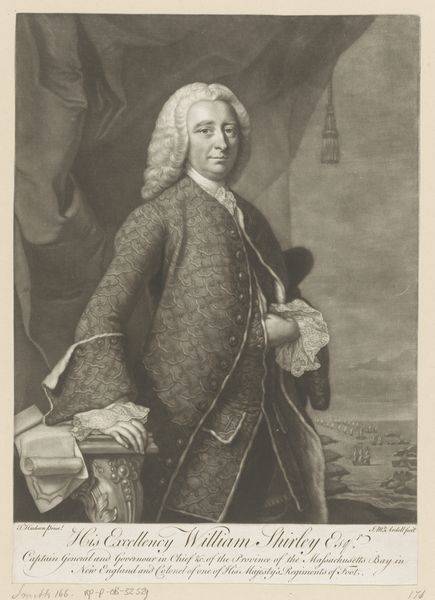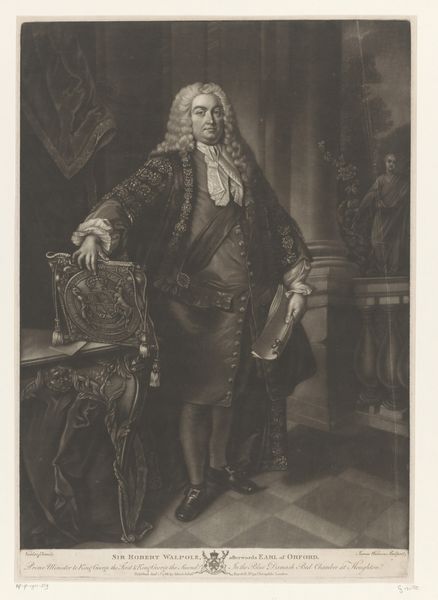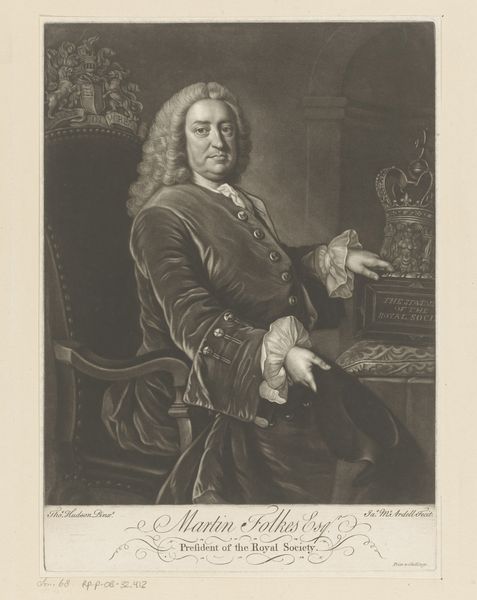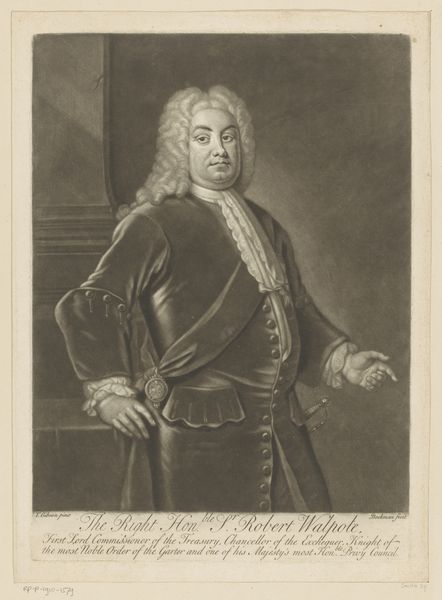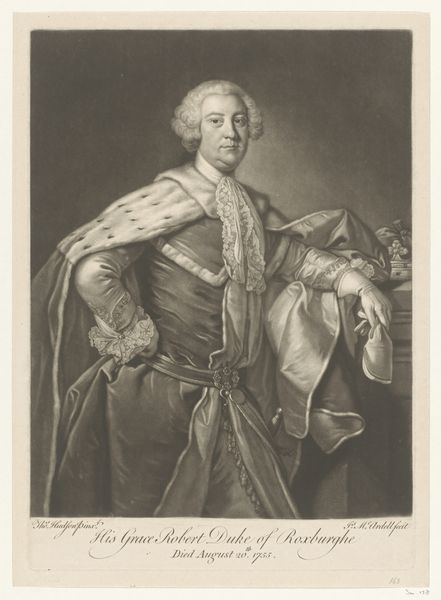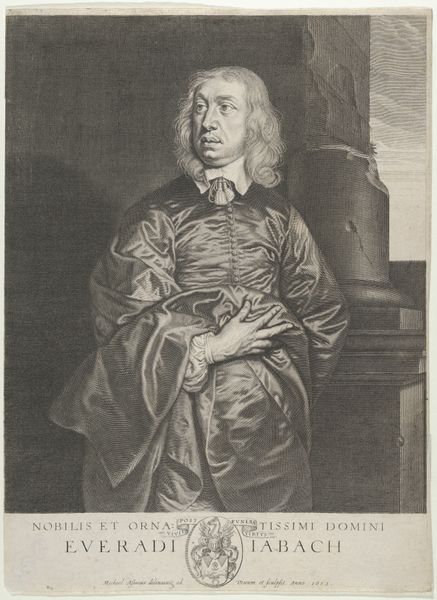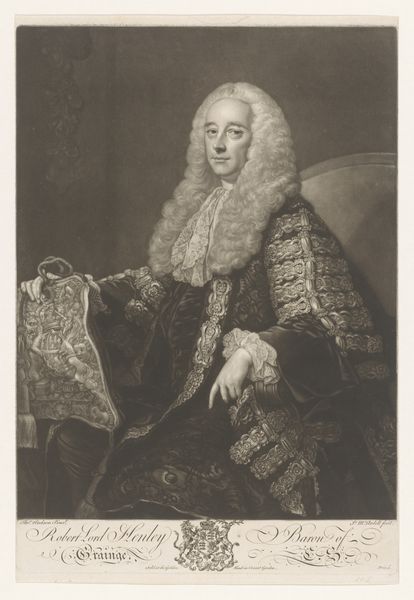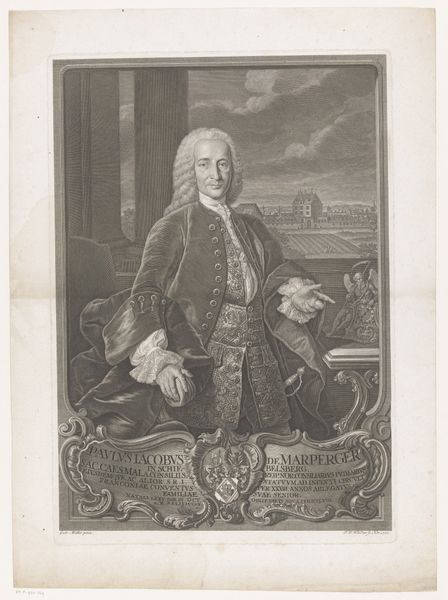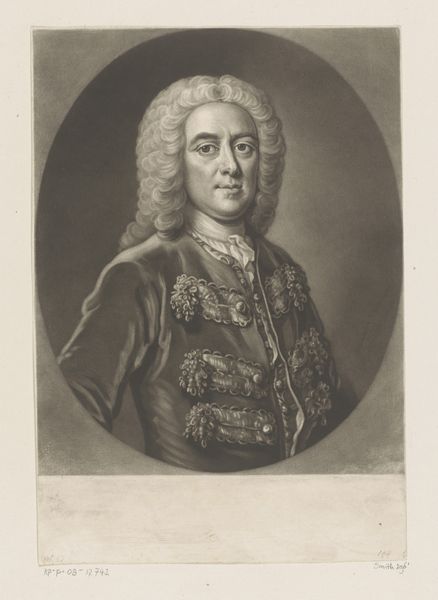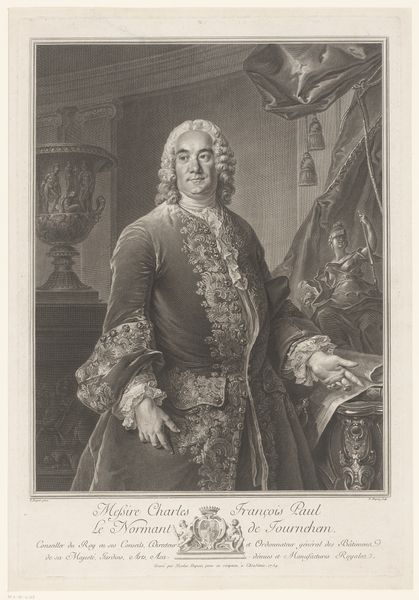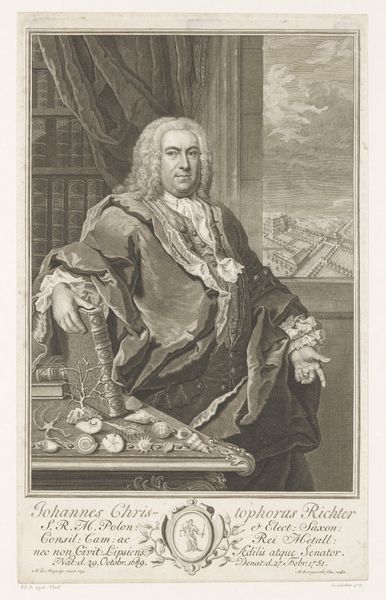
print, paper, engraving
#
portrait
#
baroque
# print
#
paper
#
historical photography
#
engraving
Dimensions: height 352 mm, width 252 mm
Copyright: Rijks Museum: Open Domain
Editor: Here we have James McArdell’s "Portrait of Gerard van Neck," an engraving from sometime between 1745 and 1765. The detail is incredible, and I’m struck by the subject’s very self-assured pose. What story does this portrait tell, in your opinion? Curator: I see here more than just a depiction of an individual. It’s a window into the social structures of the 18th century. How does the opulent clothing speak to notions of power and status, and what narratives might be hidden behind this man's confident gaze? Is it truly confidence or rather a carefully constructed performance meant to legitimise wealth within a burgeoning capitalist society? Editor: That's interesting! I hadn’t considered it as a constructed performance. But now that you mention it, the rigid posture and the lavish attire do seem less natural. Do you think the artist intended to critique these power structures or simply reflect them? Curator: It's a nuanced question. As an artist working within a patronage system, McArdell was likely constrained by the expectations of his patrons. However, even within those constraints, we can analyze the visual language. For instance, consider the sharp contrast between light and shadow and ask: is this purely aesthetic, or does it hint at moral ambiguities inherent in Van Neck's social standing? Editor: So, even seemingly straightforward elements like lighting can be read as commentary? I’ll definitely pay closer attention to those details going forward. Curator: Exactly! And consider, too, how printmaking as a medium democratized portraiture, making images of the elite more accessible. Does this in any way undermine Van Neck’s carefully projected persona of wealth? Editor: I see what you mean! It creates a fascinating tension. I'm beginning to look at this portrait in a completely different way. Thanks for your perspective. Curator: And thank you. It's through these discussions that we reveal how art actively engages with complex questions of identity and social power, rather than merely illustrating them.
Comments
No comments
Be the first to comment and join the conversation on the ultimate creative platform.
